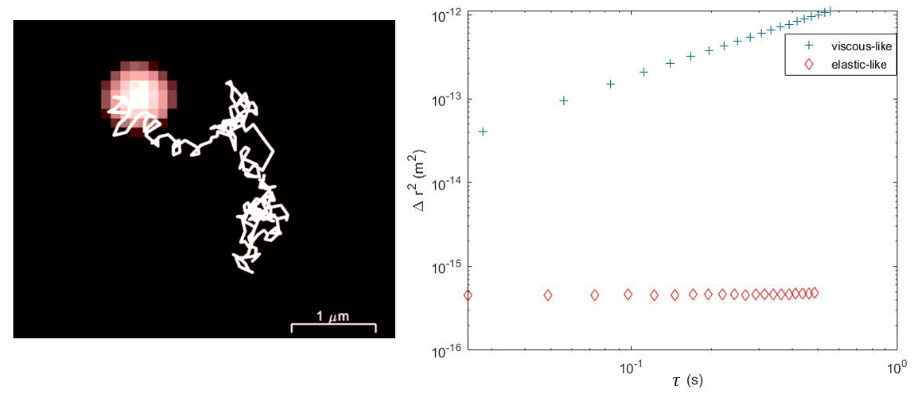Offre de stage
- Imprimer
- Partager
- Partager sur Facebook
- Partager sur X
- Partager sur LinkedIn
Emploi, Formation, Recherche

Context
Pulmonary mucus is a complex biological gel essential for airway protection. In some lung diseases such as cystic fibrosis, asthma, or COPD, mucus often exhibits abnormal elasticity that hinders clearance and contributes to airway obstruction. Disulfide bonds between mucins are considered to play a role in structuring the network, but other types of interactions may also strongly influence the mechanical response of the gel. Understanding these contributions is important both for fundamental biophysics and for identifying the origin of the high elastic properties in disease.
Objectives and methods
This project will investigate how ionic interactions mediated by calcium ions influence the viscoelastic properties of mucus. Calcium is known to bind to negatively charged sites on mucin chains, potentially forming reversible ionic crosslinks. However, the extent to which these interactions contribute to mucus elasticity remains poorly quantified.
Traditional macrorheology requires large sample volumes, which is a challenge since only few microliters of mucus can be collected from patients. To overcome this limitation, we will use microrheology, a technique that provides local, time-resolved, and rapid measurements on microscopic length scales. It tracks the Brownian motion of embedded tracer particles using fast confocal microscopy. From these trajectories, the mean square displacement is computed (Fig. 1), and the viscoelastic properties of the medium are derived via the Generalized Stokes–Einstein Relation.
>The objective of this project is to understand how calcium modulates the rheological and structural properties of mucus. Experiments will be performed on both controlled calcium-based gel models and on native mucus samples collected from patients. The results will also help to understand how additional components present in mucus, such as calcium-binding proteins, keratins, or trefoil factors like TFF3, modulate these ionic links and contribute to mucus network assembly.
Candidate profile
- Master 2 student in physics, chemistry, biophysics, materials science, or related fields.
- Interest in experimental research and complex biological systems.
- Autonomy, rigor, and ability to work in a team.
- Background knowledge in soft matter, polymers, or rheology would be appreciated.
Environment and Supervision
This internship is part of a larger project on the origins of mucus elasticity in obstructive lung diseases. It will take place at the Laboratoire Rhéologie et Procédés in Université Grenoble Alpes, within a multidisciplinary team specialized in the study of complex soft and biological materials.
Contact
Please send the CV and the motivation letter to:
Hugues Bodiguel: hugues.bodiguel univ-grenoble-alpes.fr (hugues[dot]bodiguel[at]univ-grenoble-alpes[dot]fr)
univ-grenoble-alpes.fr (hugues[dot]bodiguel[at]univ-grenoble-alpes[dot]fr)
and Kawthar Shaalan: kawthar.shaalan univ-grenoble-alpes.fr (kawthar[dot]shaalan[at]univ-grenoble-alpes[dot]fr)
univ-grenoble-alpes.fr (kawthar[dot]shaalan[at]univ-grenoble-alpes[dot]fr)
Duration
Duration: 5 to 6 months
Starting Date: February 2026
- Imprimer
- Partager
- Partager sur Facebook
- Partager sur X
- Partager sur LinkedIn